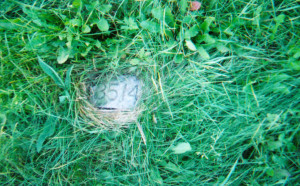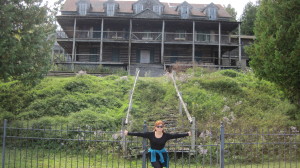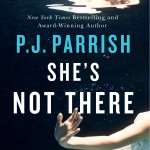The craftless anarchy of the Beat poets on the one hand, and the extreme control of Henry James on the other, suggest that for most human beings, just as both freedom and discipline are necessary in life, serendipity and design must coexist in a work to make it readable.–Mark Helprin
So I’m watching the Heat play the Mavericks the other night and I got curious as to how this odd game of basketball came to be. I mean, c’mon…giant men in shorts pounding back and forth on parquet and tossing a ball in a string hoop? Who came up with this idea?
The Heat was losing so I used the time to Google “origins of basketball” and there it was: the subject of my first Kill Zone post of the new year.
Now I didn’t know this at the time. I didn’t really come to the topic of today’s post until two days later on Sunday morning over my scrambled egg breakfast. But I am getting ahead of myself. Back to basketball.
It was invented in 1891 by a phys-ed teacher named James Naismith. He nailed two peach baskets to the wall of a gym and his students started tossing a ball into the baskets. But there was a problem. Every time a guy shot the ball into the basket, somebody had to get up on a ladder and take it out. That wasted a lot of time and it ruined the flow of the game. But eventually, the bottoms of the peach baskets wore out and the balls started falling through. This gave rise to a global billion-dollar industry we know today as professional basketball.
Fast forward to Sunday and my breakfast at the Floridian restaurant here in Fort Lauderdale. There I am, eating my eggs and reading my New York Times and in the back of my brain I am sweating over the fact that I haven’t finished my post for the opening of the Kill Zone’s new year. Deadline looms. I have started three different posts and all are meh. Then I open to the Sunday Review section and there it is on the front page — an article about serendipity in creativity.
The article points out that many of our modern conveniences, greatest inventions and scientific breakthroughs came about by someone stumbling on something by accident. You remember George de Mestral. He was the Swiss engineer who while hunting in the Jura mountains in Switzerland in the 1940s, looked down at the cockle-burrs in his dog’s fur and wondered how they got stuck there. Voila! Velcro.
Then there is Spencer Silver. He was a scientist slaving away at 3M trying to find a reuseable super-glue. One time he slapped some “low tack” adhesive on a piece of yellow scrap paper that was laying around the lab. Nobody noticed until five years later, a friend used one of the little adhesive papers to mark a page in his hymn book. Presto! Post Its.
The article in the Times (click here to read) goes on to pose two questions: Do some folks have a special talent for serendipity? And can we train ourselves to “cultivate the art of finding what we are not seeing?”
Now, as a writer, I think these are good questions for us. I am a huge fan of serendipity. First it is a lovely word, isn’t it? Sounds like a calliope tune carried on the breeze.
The word goes all the way back to 1754 and was made up by a guy named Horace Walpole. He read a Persian fairy tale called The Three Princes of Serendip. He got excited by the idea that the princes were “always making discoveries of things which they were not in quest of.”
What does serendipity mean exactly?
Hard to say really. It was voted one of the ten English words hardest to translate in June 2004 by a British translation company. If you look it up, you get stuff like “fortunate happenstance” or “pleasant surprise.” But I think, when you apply it to creative ventures like writing, it becomes much more of a slippery fish, right up there with “voice.”
But here’s the thing: I am a true believer in the power of serendipity. It has pulled me across many a desert in my writing travels, giving me hope and nourishment when I am convinced I have dried up and will never produce another story of value ever again. I know I would not be a writer without it. My partnership with my sister Kelly was serendipitous in that I had been dropped by my romance publisher and Kelly was secretly spinning her wheels writing a mystery about some guy named Louis Kincaid. My husband suggested I give her a call.
Every one of our books since has had its own “happy accident.”
Dead of Winter found its footing and its villain only after a conversation I had with a good friend about his experiences as a pilot in Vietnam.
Paint It Black came from a family dinner as I listened to my brother-in-law’s son, who was doing a psychiatry residency, talk about a strange case he had about a black man whose delusions made him think he was a white racist.
The next book, Thicker Than Water, was about nefarious lawyers. But early on, I was writing a chapter in which Louis is interviewing a lawn maintenance man and suddenly, in my brain, I heard the screech of a bus’s air brakes. A second later, I typed that a young boy had entered the shed, just home from school. I hadn’t planned him, hadn’t talked to Kelly about him, but I knew the kid had to stay in the picture. Two hundred pages later the boy asks Louis: “Can a kid get in trouble for something he knows?” Turns out he knew who the killer was even though we didn’t.
Songs are often sources of serendipity for me. Our fifth series book, Island of Bones, came from one of my favorites by the J. Giels Band, “Monkey Island.” Here are some of the lyrics:
No one could explain it
What went on that night
How every living thing
Just dropped out of sight.
We watched them take the bodies
And row them back to shore.
Nothing like that ever
Happened here before.On the east side of the island
Not too far from the shore
There stood the old house
Of fifty years or more
All the doors and windows
Were locked inside and out
The fate of those trapped in there
Would never be found out.
Kelly and I were twiddling our pens at a Borders signing one day and I showed her the lyrics and asked her “What happened on that island, you think?” We drew blanks until a lady came up to get her book signed and we asked her what she did for a living. “I’m a sociologist who specializes in the pathology of large families forced to live together.” Twenty minutes later, we had the plot for our next book.
A Killing Rain found its heart when I got lost driving in the Everglades and ended up in a place called Starvation Prairie (Where we staged the climax). Likewise, our story about Palm Beach society swells The Little Death found new dimension when I took a short cut driving to Belle Glade and ended up in a place called Devils Garden where there was nothing but a creepy abandoned cattle pen. (Where we promptly hid a beheaded victim).
An Unquiet Grave was another accident. We were revisiting our old neighborhood in Westland Michigan and decided to drive by the nearby mental hospital, Eloise, because it always had loomed large in our childhood memories. It was shut down except for a small museum, but we decided to walk the grounds, got lost and ended up in a large grassy field. I felt something underfoot, looked down and saw this:

Turned out we had stumbled on the asylum’s potters field where countless patients had been buried with only numbers to mark their lives and death — and a good story.
The next book, The Killing Song, was a happier accident. It came when my husband Daniel got tipsy on kir royales in a Paris café and started singing the Rolling Stones song, “Too Much Blood.” A tourist trip down into the Paris catacombs the next day nailed it.
And our most recent Louis Kincaid book, Heart of Ice, sprang almost fully formed from our brains when Kelly and the nice ladies at the Island Book Store told us about this abandoned hunting lodge on Mackinac Island.

Which brings us up to date with the latest, She’s Not There. This book is a mosaic of serendipity starting with the Zombie song title, which I heard on my iPod while jogging. Then I was reading Andrew Sullivan’s blog and he always posted a Poem For Saturday. That day it was devoted to an anthology Poems of the American South, and two spiky lines from Carolyn Wright’s “Lake Return” jumped off the screen at me:
Why I come here: need for a bottom, something to refer to;
where all things visible and invisible commence to swarm.
After that, Amelia’s journey to find her memories and life — her footing on the sandy lake bottom of her past — started to unfold in my brain and as the saying goes, all I had to do was run after her, pen in hand.
So when it came to serendipity, am I just lucky? I don’t think so. Even back in 1754, Walpole thought serendipity had two important dimensions: accidents and sagacity.
Accidents, he said, were the conjuncture of ideas, objects, intuitions, knowledge fragments etc. that in the usual course of things would not encounter each other.
But sagacity was the motor, he added. It is where your depth of experience, expertise, and craftsmanship (my italics) enter into the game and allows the unexpected to bear fruit. So for serendipity to work, you need a lot random encounters (accidents) and your creative disciplines (sagacity) to bring it to life.
It’s like what Seneca says about luck: It is just the intersection of opportunity and preparation. Or as Sam Goldwyn put it: “The harder I work, the luckier I get.”
But to return to that New York Times article for a moment: Can we writers learn to harness the power of serendipity? I think so. In fact, I’d plead the case that you need to, if you want to be a good writer.
Yes, you can learn your craft, you can read the books, you can go to critique groups. You can network at conferences, talk to agents and editors, and self-promote on Facebook until your fingers bleed. But isn’t it all for nothing if what you write has no feeling of surprise or joy? For your readers…or for you?
Here’s my takeaway: Yes, you must be sagacious. (See above). But you also must be willing to divert from the usual path, extend your antenna so high it hurts, look for hidden treasure and strive to make connections between it all.
You have to be what one person in the Times article calls a “super-encounterer.” Someone who can spend an afternoon searching through dusty Victorian journals on cattle breeding and find a use for it. You have to be a gatherer of string, a magpie cadging colorful pebbles. And you have to be willing to throw the occasional monkey wrench into your normal creative flow.
When he was a young reporter, Gay Talese wrote something wonderful about his home town of New York:
New York is a city of things unnoticed. It is a city with cats sleeping under parked cars, two stone armadillos crawling up St. Patrick’s Cathedral, and thousands of ants creeping on top of the Empire State Building. The ants probably were carried there by winds or birds, but nobody is sure; nobody in New York knows any more about the ants than they do about the panhandler who takes taxis to the Bowery; or the dapper man who picks trash out of Sixth Avenue trash cans; or the medium in the West Seventies who claims, ‘I’m clairvoyant, clairaudient and clairsensuous.’”
Talese went on to gather all his string into a book titled New York: A Serendipiter’s Journey. In this new writing year, may your own journeys be so clairsensuous.
________________________________________________________
May I be allowed a postscript for some BLP? Our book SHE’S NOT THERE was on special Kindle discount this past month and though it has been out since Sept. 5, it took off and for one brief shining moment, we became the #64 bestselling paid book in all of Kindledom. Today, it’s still hovering around #100 and is #25 in mystery/thrillers and #5 in psychological suspense. It has also given a boost to our back list Louis Kincaid titles sales so our current Amazon Author Rank is #24 in thriller. There are lessons in this for TKZ readers and I will try to gather this into a future post. ALSO: Amazon will be running a discount of the tree-book version this month but I don’t have details yet. Stay tuned, and thanks for supporting the new book!



I have the tree version of SHE’S NOT THERE, and recommend it. I think it’s your best book yet, Kris, and I like them all. Happy accidents are the lifeblood of writers. One of my favorite novels, FINAL SAIL, came about because I met author Victoria Allman, a yacht chef, when we signed books together at a store and she said, “You ought to write about a yacht crew.” Luckily for me, I recognized this gift she’d handed me.
Can’t wait to read SHE’S NOT THERE–congrats, Kris! Happy 2016!
The reviews for She’s Not There are great! I just ordered a copy.
Thanks guys. Am late logging in here…was at critique group all day. Good fruitful session with my writing buds.
Great post. Looking for serendipity in 2016.